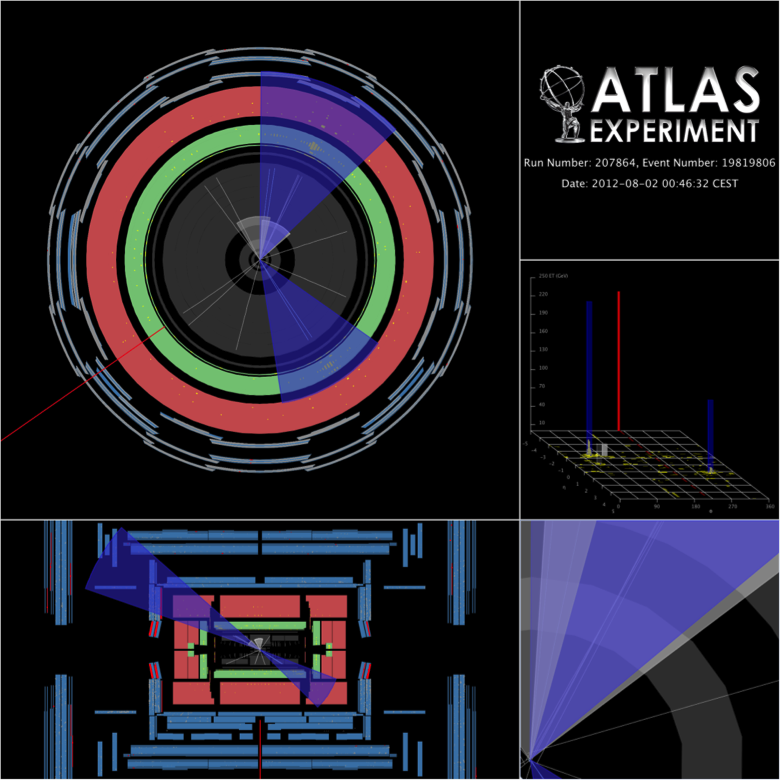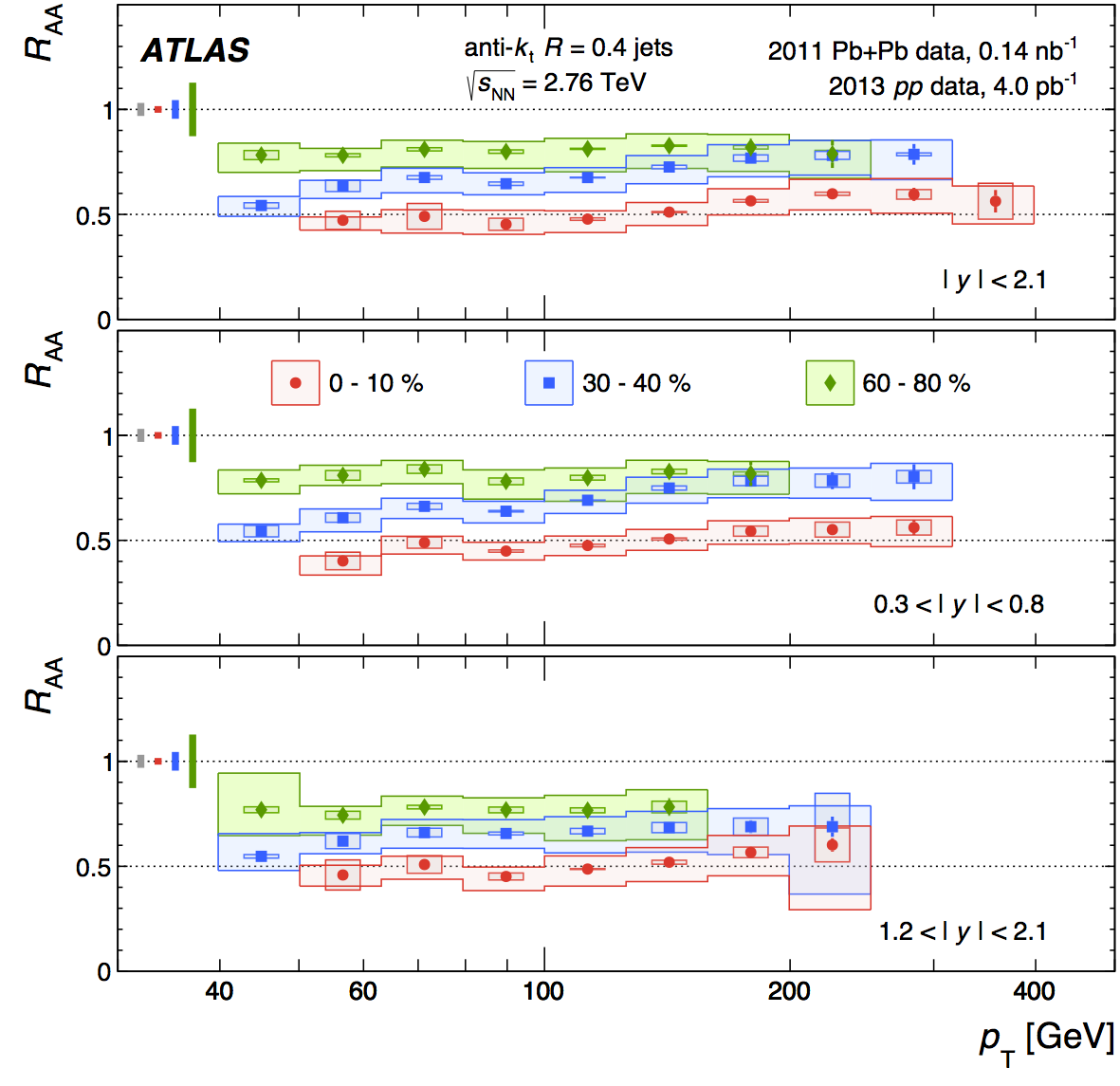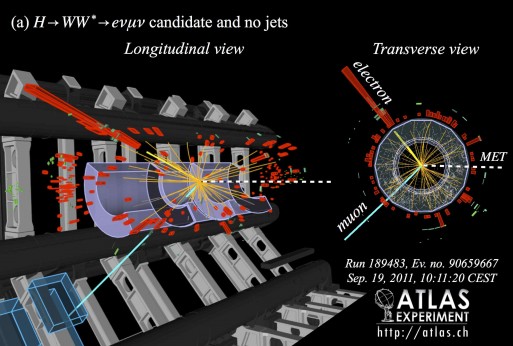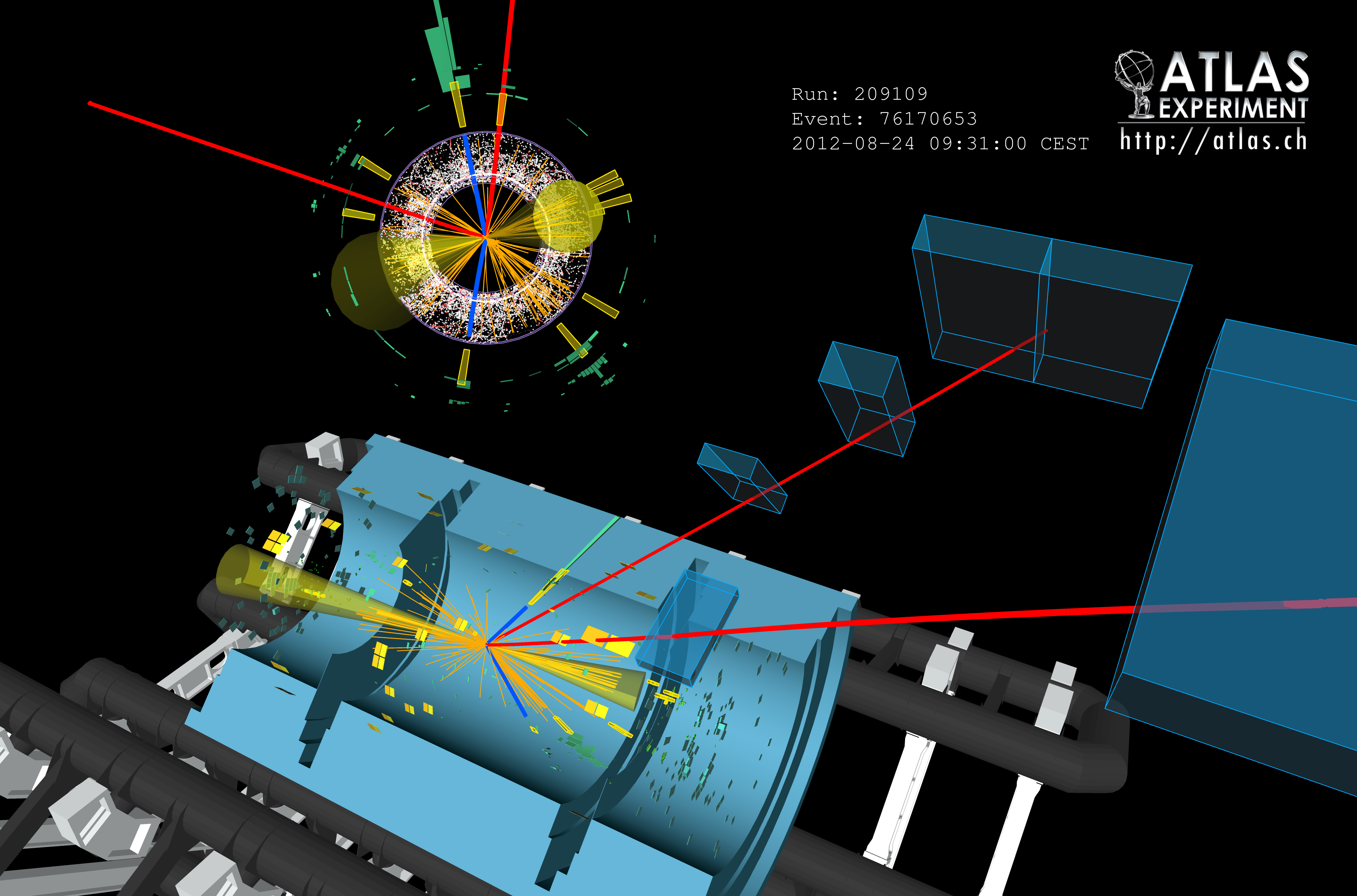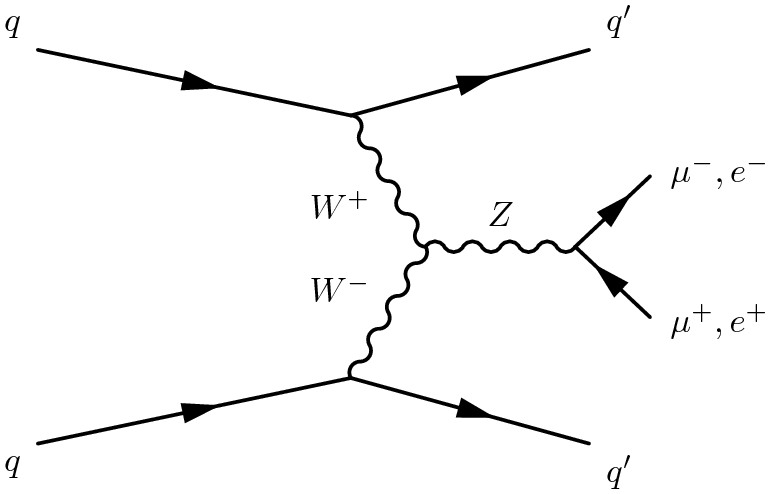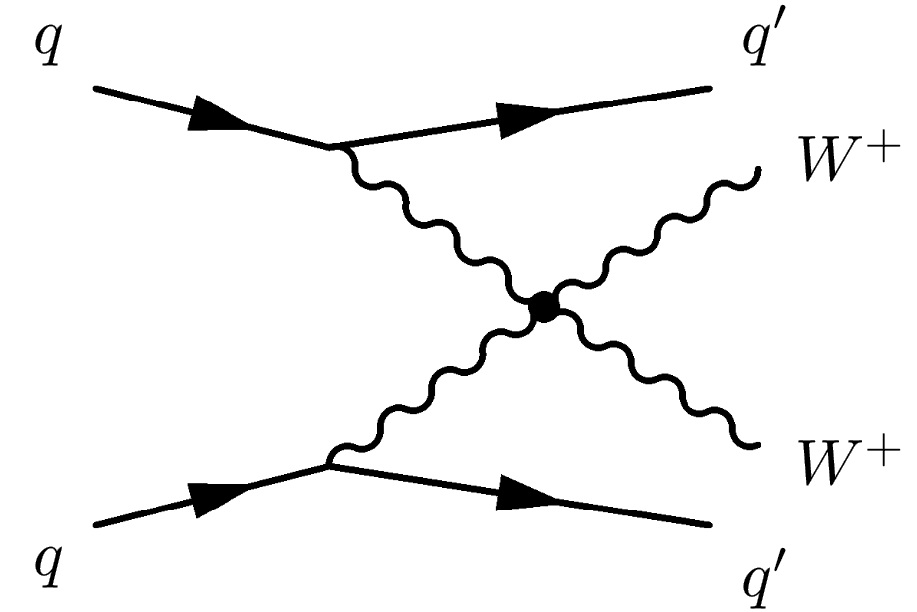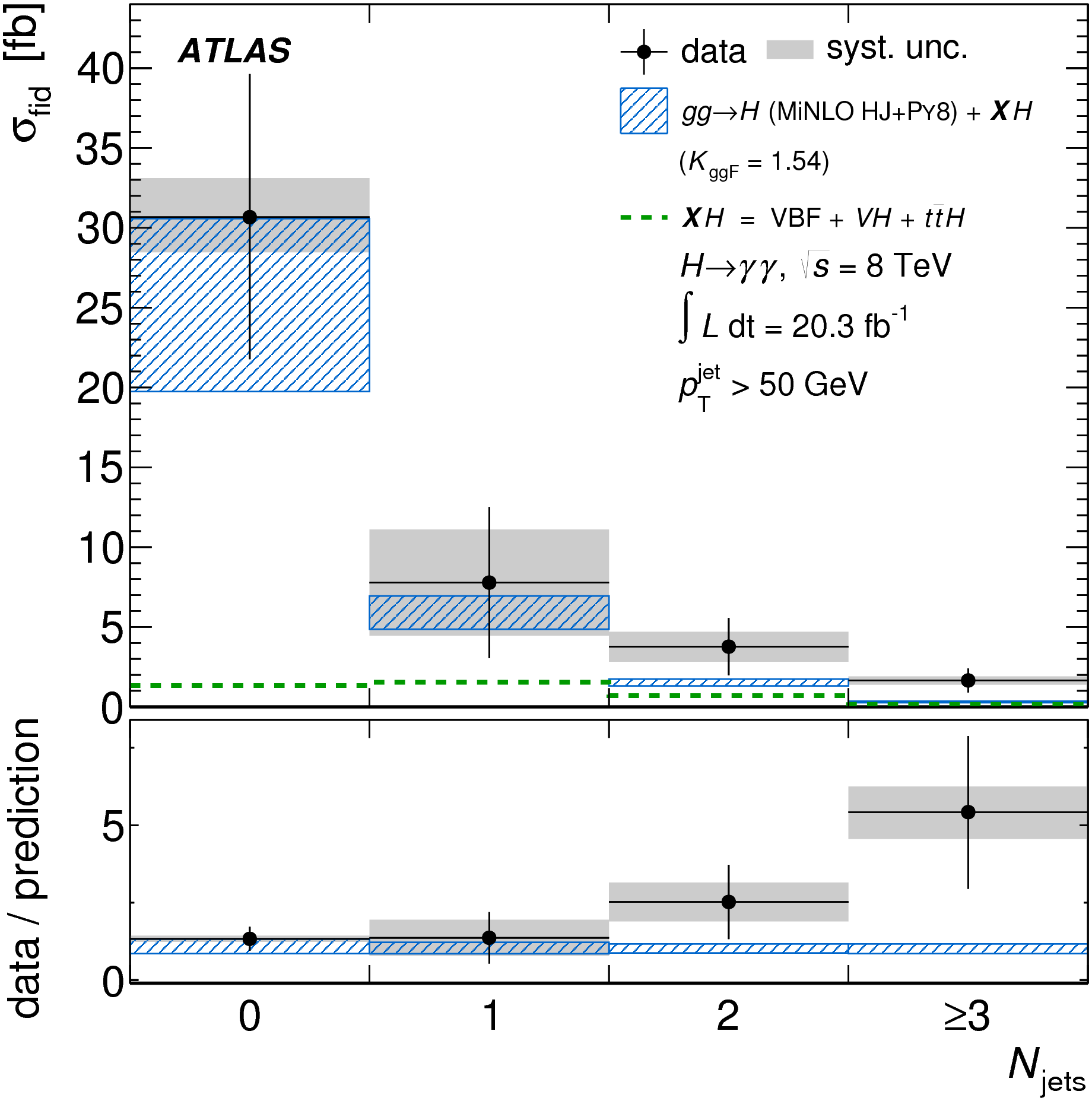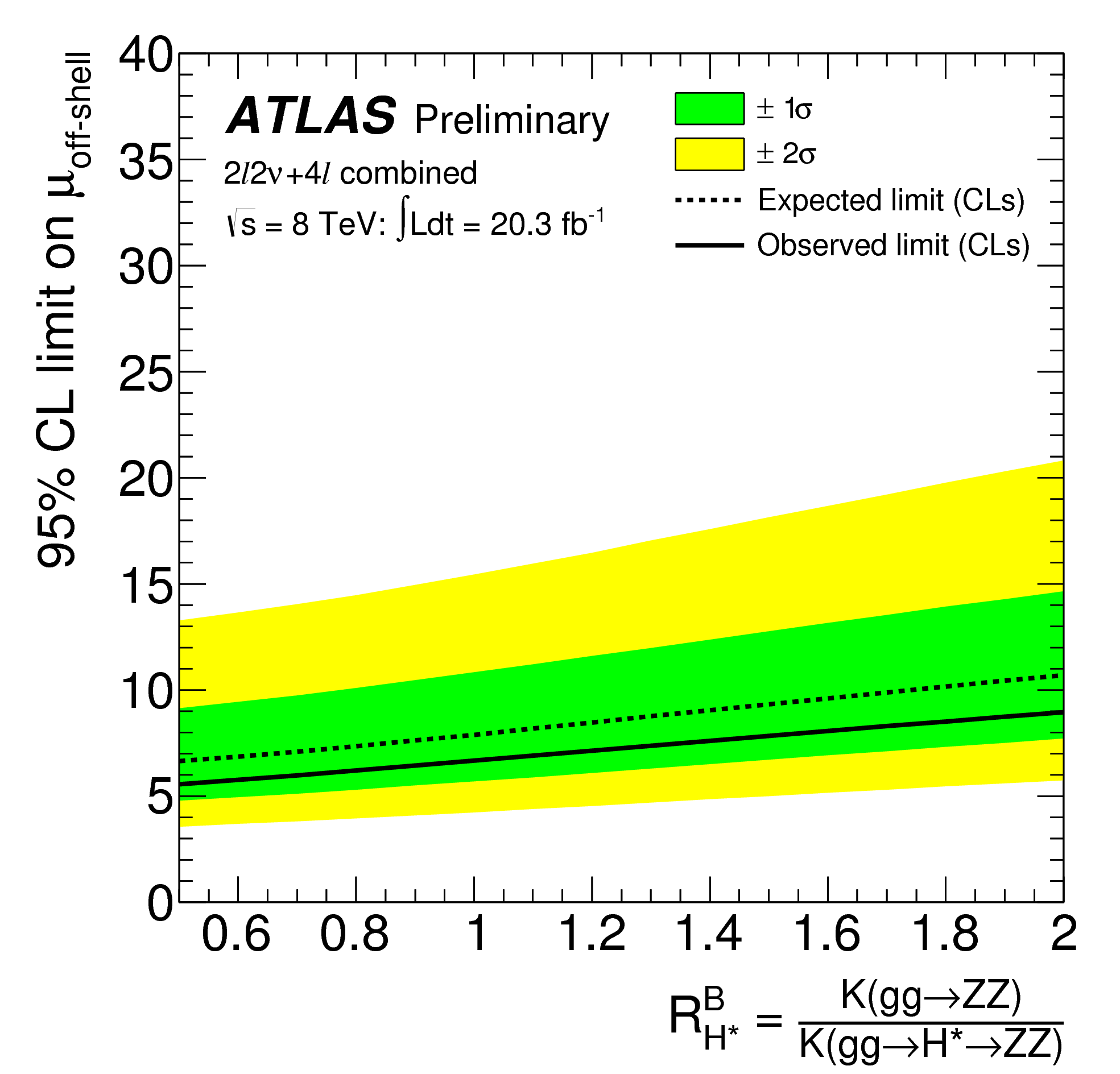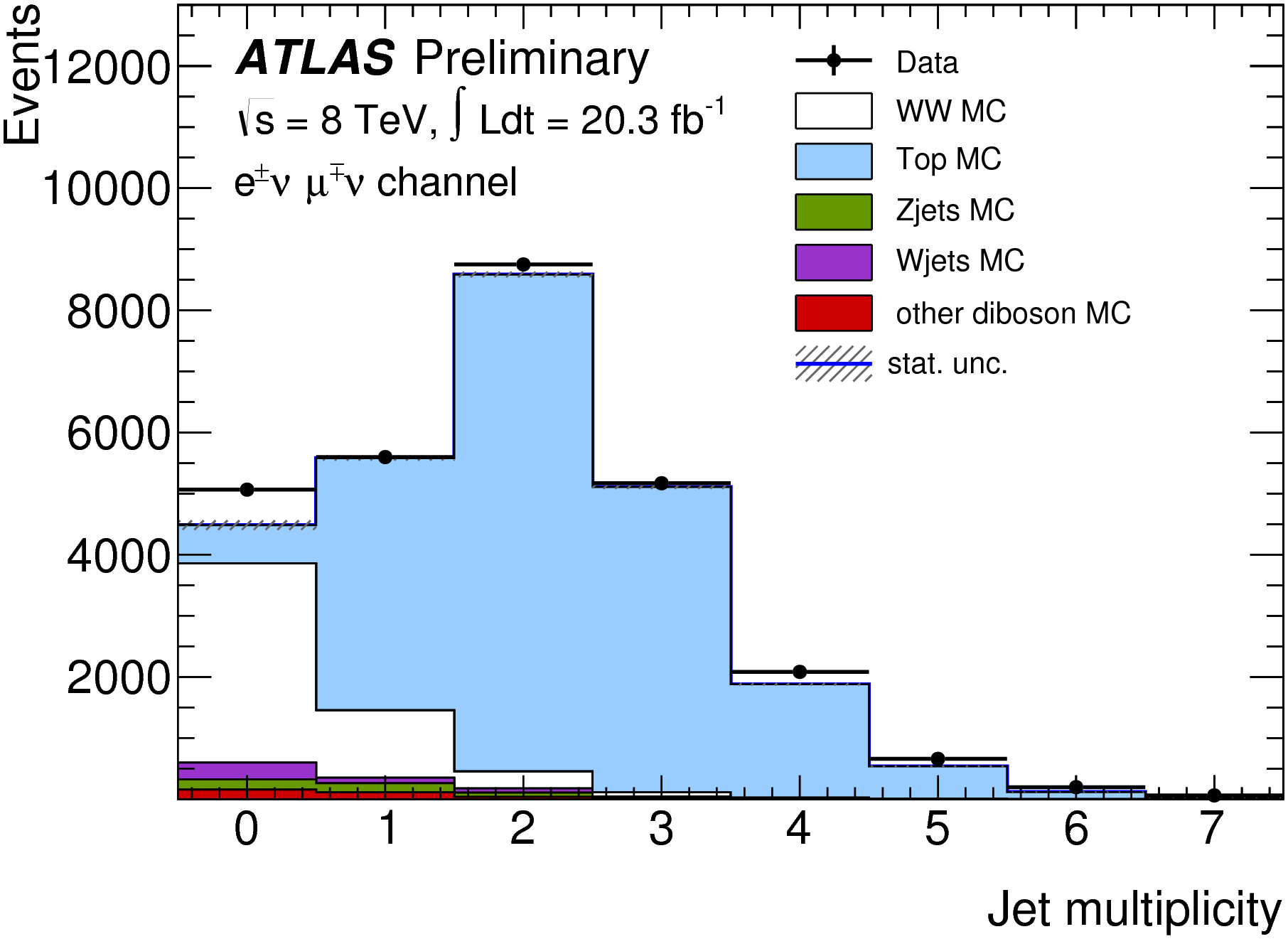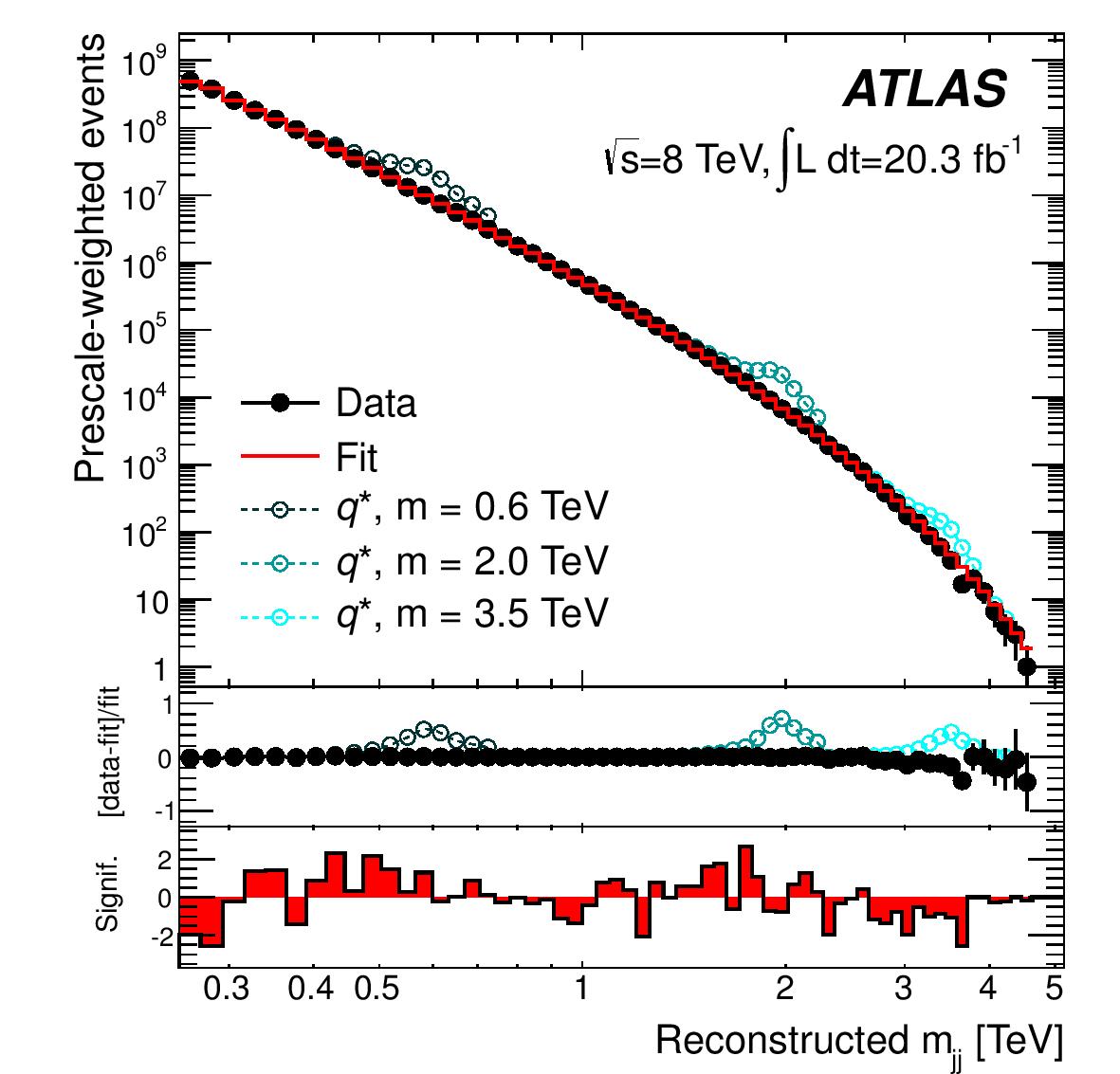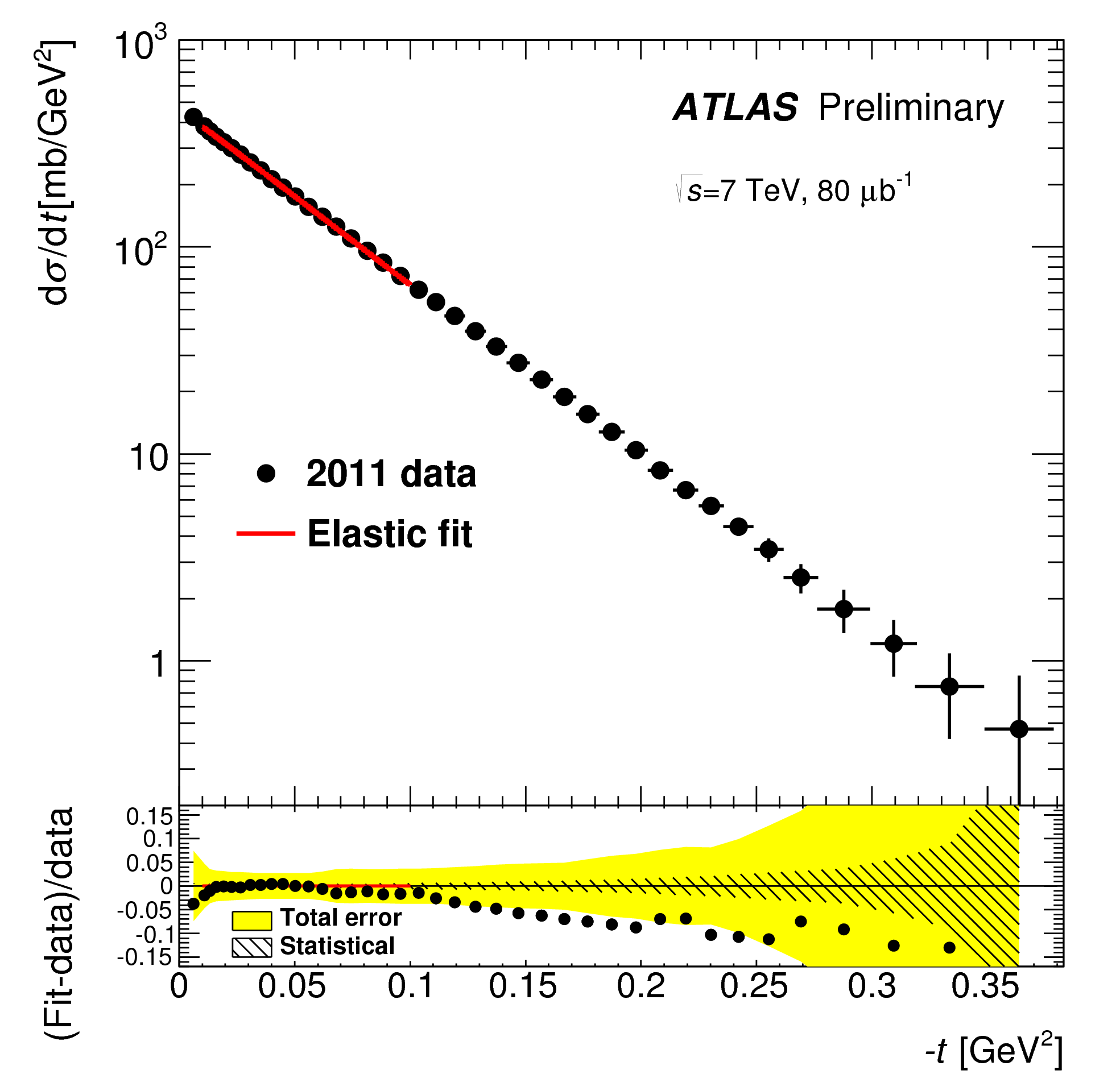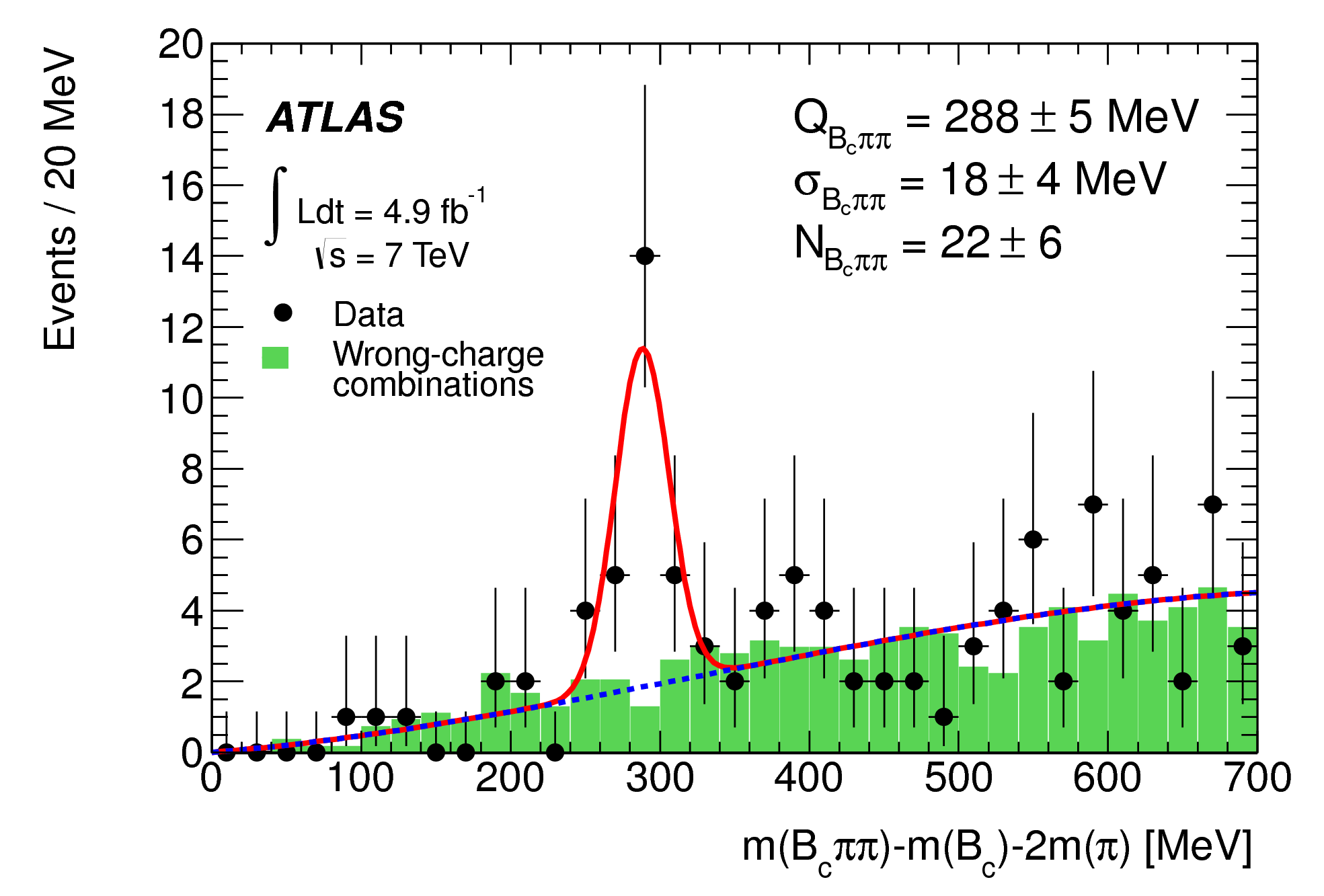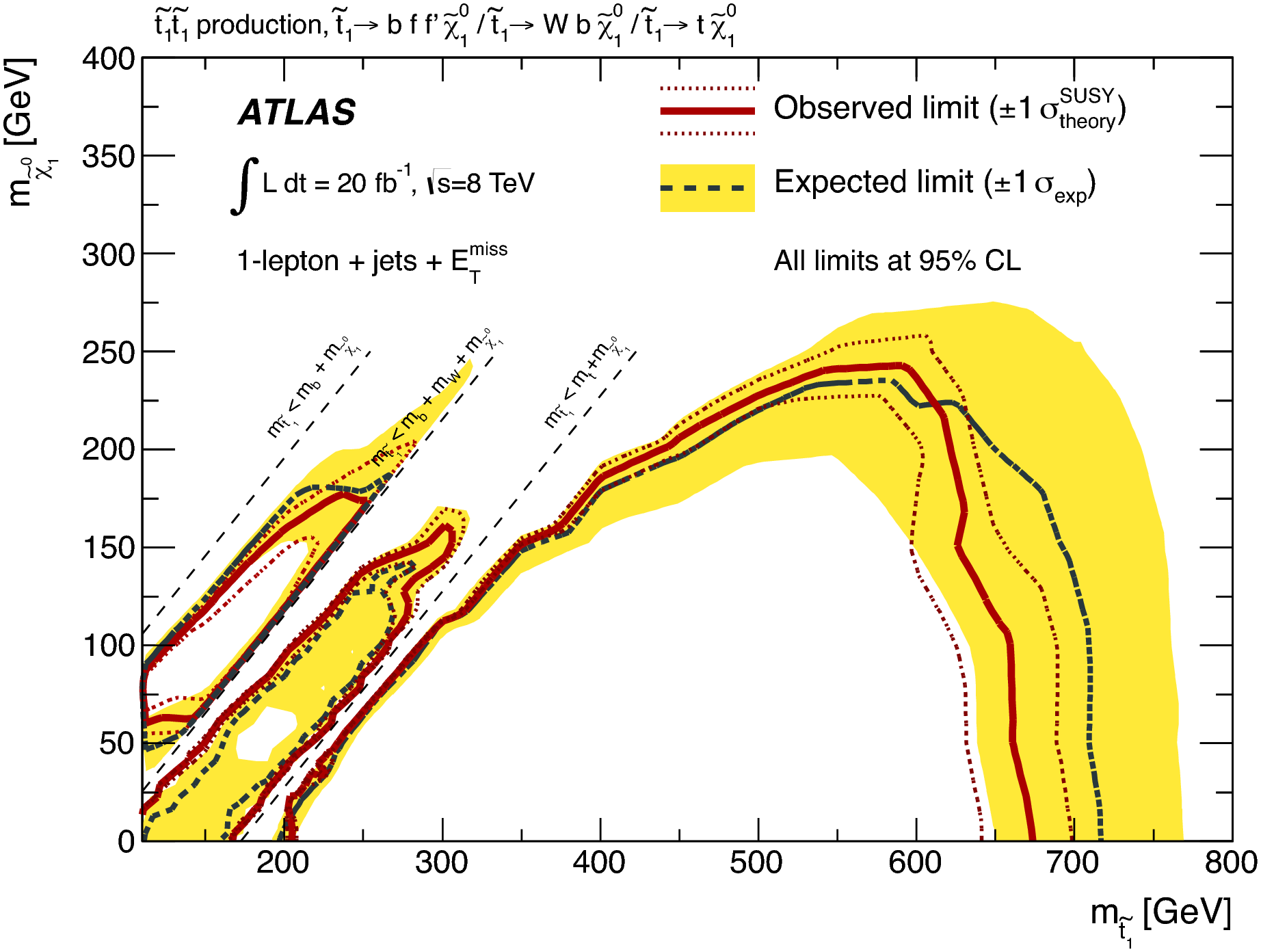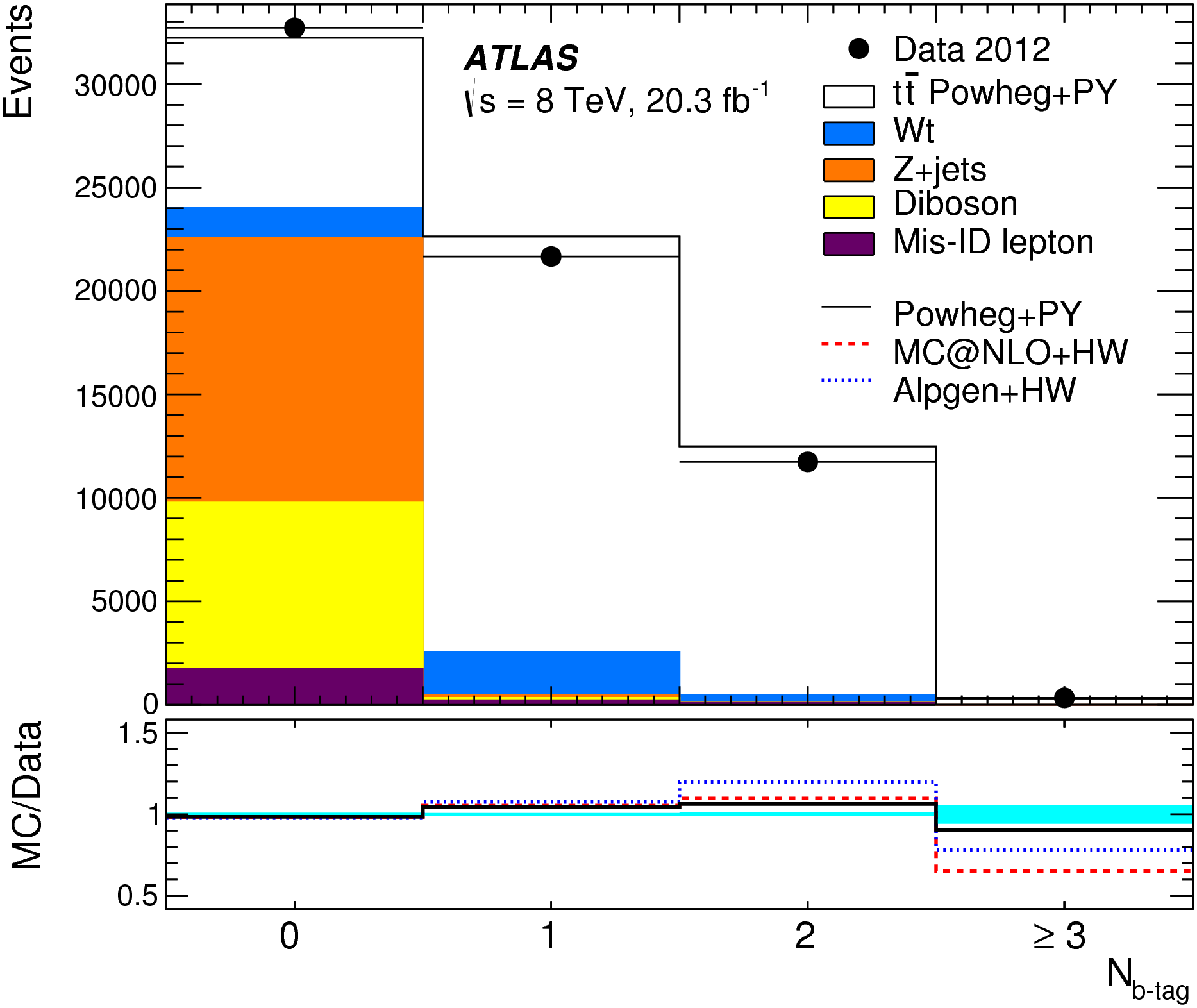Briefings
In search of super charm
If all the experimental evidence supports a theory, why should anyone want to dream up additional particles? Yet exactly this situation arose in the late 1960s. At that time, when the complete table of the known hadrons could be explained with just three quarks, theorists were already proposing a fourth, which they whimsically called “charm”.
Quenching jets in the hot dense matter produced by colliding lead ions
The Large Hadron Collider is known to collide protons, but for one month a year, beams of lead ions are circulated in the 27-km tunnel and made to collide in the centre of the experiments. The ATLAS experiment has made new precise measurements of the suppression of jets as they blast through the dense matter created by the lead ion collisions.
New ATLAS precision measurements of the Higgs boson: Observation of WW decay
The Standard Model makes many different predictions regarding the production and decay properties of the Higgs boson, most of which can be tested at the Large Hadron Collider (LHC). Since the discovery, experimentalists from the ATLAS collaboration have analysed the complete dataset recorded in 2011 and 2012, have improved the calibration of the detector, and have increased substantially the sensitivity of their analyses.
Searches for new physics with photons produced at vertices displaced from the collision point
Theories, such as supersymmetry, propose the existence of new types of particles to explain important questions about the universe, such as the nature of dark matter. ATLAS has performed a search for one such type – exotic heavy particles that have lifetimes long enough that they travel partway through the detector before decaying, at what is called a displaced vertex.
Higgs boson production measurements from the channels of discovery
The discovery of the Higgs boson by the ATLAS and CMS collaborations in 2012 marked a new era in particle physics because it completed the Standard Model and gave us another tool to explore territories beyond. The Standard Model predicts precisely the interactions of the Higgs boson to all other elementary particles once its mass is measured.
First observation of Z-boson production via weak-boson fusion
The fusion of two weak bosons is an important process that can be used to probe the electroweak sector of the Standard Model. Measurements of Higgs production via weak-boson fusion are crucial for precise extraction of the Higgs-boson couplings and have the potential to help pin down the charge conjugation and parity of the Higgs boson. A similar process, weak-boson scattering, is sensitive to alternative electroweak symmetry-breaking models and to anomalous weak-boson gauge couplings. These processes are extremely rare and the experimental observation of the production of heavy bosons via weak-boson fusion has become possible only recently with the large centre-of-mass energy and luminosity provided by the LHC. Extracting the signals from the huge backgrounds in the high pile-up conditions at the LHC is a major challenge.
ATLAS finds evidence for the rare electroweak W±W± production
The Standard Model of particle physics has been extremely successful in predicting a vast variety of phenomena – so successful, that it is easy to forget that some of its predictions have not yet been verified. A very important one, related intimately to electroweak symmetry breaking, is that the gauge bosons (γ, W and Z) can interact with each other through quartic interactions.
Probing Higgs boson production properties
ATLAS has measured properties of events likely to contain a Higgs boson, in order to get a better understanding of the frequency and manner in which they are produced. The study specifically examines the fiducial and differential cross sections for Higgs bosons that decay into two photons or into two Z bosons, using proton-proton collisions recorded by ATLAS in 2012.
The Higgs boson’s shadow
ATLAS physicists have studied the “shadow” of the Higgs boson far above its mass peak in an analysis of the full sample of 8 TeV proton-proton collisions delivered by the LHC in 2012. The study involves Higgs boson decays into two Z bosons, which themselves decay into four charged leptons or two charged leptons plus two neutrinos. Among other interesting properties, it provides new insight into the lifetime, or natural width, of the Higgs boson.
The WW cross-section: a high flyer
The production of pairs of heavy bosons, such as two Z bosons, a Z and a W boson, or the more challenging pair of W bosons (WW), are processes that particle physicists are passionate about because they cover a rich spectrum of phenomena. The WW channel, in particular, represents a substantial experimental challenge. In the events considered for this measurement, each W boson decays into an electron or a muon plus a neutrino that remains undetected and is reconstructed through the presence of missing energy in the event.
Are quarks fundamental particles?
From decades of discoveries made at particle colliders, we know that protons are composed of quarks bound together by gluons. We also know that there are six kinds of quarks, each one with its associated antiparticle. But are quarks fundamental? ATLAS searched for signs that quarks may have substructure in its most recent data, collected from the LHC’s proton-proton collisions in 2012.
Counting collisions with ALFA
Data from a special run of the LHC using dedicated beam optics at 7 TeV have been analysed to measure the total cross-section of proton-proton collisions in ATLAS. Using the Absolute Luminosity For ATLAS (ALFA), a Roman Pot sub-detector located 240 metres from the collision point, ATLAS has determined the cross-section with unprecedented precision to be σtot (pp → X) = 95.4 ± 1.4 millibarn.
The production of W bosons in association with jets
The production of a W boson in association with “jets” of particles initiated by quarks or gluons (“W+jets” events) is an important signature to test quantum chromodynamics, the theory of strong interactions. A new measurement reported by ATLAS focuses on studying the properties of the jets in a large data sample of W+jets events.
A new state of beauty and charm
ATLAS has observed a particle state of mass and decay properties consistent with expectations for an excited state of the Bc meson. The discovery follows analysis of the full 7 TeV and 8 TeV proton-proton collision data sets from the LHC’s first run.
Hunting for the top squark
Measuring top production in the LHC
Using the full data sample from the LHC’s first run of proton-proton collisions, ATLAS has measured the production rate of top and anti-top quarks.
New evidence for top quark pairs produced with W or Z bosons
Evidence for the production of a W or Z boson together with a top quark pair, referred to as tt̄W and tt̄Z processes, has been found in the ATLAS analysis of the 8 TeV data from the LHC’s first run.
Precise measurement of the Higgs boson mass
The ATLAS Collaboration has analyzed its full Run 1 data sample of seven and eight TeV (tera electron Volts) proton-proton collisions delivered by the Large Hadron Collider (LHC), to produce an accurate measurement of the Higgs boson mass. The Higgs boson resonance appears as a narrow peak in the mass spectra of its decays to two photons or to four charged leptons, as shown in the two figures below.

